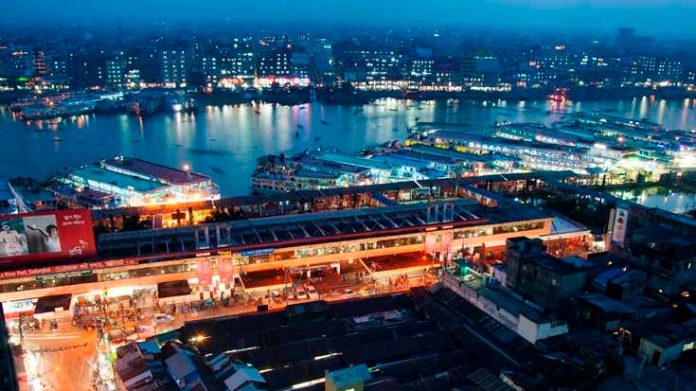অতীতে কোন এক সময় মনে করা হতো যে, সিঙ্গাপুরের চেয়ে কয়েক গুণ বেশি সম্ভাবনাময় এক উন্নয়নশীল দেশ হচ্ছে বাংলাদেশ। অথচ আজ এক বিংশ শতাব্দীতে এসে নিজ দেশে কর্মসংস্থানের সুযোগ সৃষ্টি করতে না পেরে জীবিকার তাগিদে জমা-জমি বিক্রি করে হলেও সেই সিঙ্গাপুরেই কাজ করতে যেতে হচ্ছে আমাদেরই সম্মানিত যুবক ভাইদের। আবার ৯০ এর দশকে মালয়েশিয়াকে একটি অত্যন্ত সম্ভবনাময় এবং উদীয়মান অর্থনৈতিক সক্ষমতার দেশ হিসেবে বিবেচনা করা হতো। তবে ২০১০ সালের পরবর্তী সময়ে দেশটি কিন্তু আর তার অর্থনৈতিক উন্নয়নের ধারাবাহিকতা বা অগ্রযাত্রা সেভাবে আর ধরে রাখতে পারেনি।
বিশেষ করে অপেক্ষাকৃত কম গুরুত্বপূর্ণ অবকাঠামো ও উন্নয়ন খাতে বিলিয়ন বিলিয়ন ডলার ব্যয় করার ফলে এগুলোই কিন্তু আজ মালয়েশিয়ার গলার কাঁটা হয়ে দেখা দিয়েছে। কারণ বস্তবায়িত এহেন ব্যয়বহুল প্রজেক্টে মালয়েশিয়ার অর্থনৈতিক উন্নয়নে সরাসরি তেমন একটা কাজে না লাগলেও তার পরিচালনায় বিপুল পরিমাণ অর্থ এখনো পর্যন্ত ব্যয় করে যেতে হচ্ছে দেশটিকে। যেমন ধরুন, মালয়েশিয়া ১৯৯৯ সালে প্রায় ২.০০ বিলিয়ন ডলার ব্যয়ে অত্যন্ত জাঁকজমক পূর্ণ ১,৪৮৩ ফুট উচ্চতার ৮৮ তলা বিশিষ্ট্য পেট্রোনাস টুইন টাওয়ার উদ্ভোধন করে। আজ রাষ্ট্রীয় পর্যায়ে ২ বিলিয়ন ডলার খুব একটা বেশি অর্থ বলে মনে না হলেও ক্রয় ক্ষমতার বিচারে নব্বয়ের দশকে ২ বিলিয়ন ডলার কিন্তু বেশ বড় অংকের অর্থ ছিল।
এটি প্রথম দিকে সারা বিশ্বে ব্যাপক প্রশংসা কুড়ালেও আজ কিন্তু তা মালয়েশিয়ার জন্য একটি সাদা হাতি পালার মতো অবস্থা সৃষ্টি হয়েছে। এ রকমভাবে অনেকটাই কম গুরুত্বপূর্ণ বা কিছুটা জনবিরল এলাকায় বিলিয়ন ডলার ব্যয় করে আধুনিক আন্তর্জাতিক মানের বিমান ও সমুদ্র বন্দর নির্মান করলেও তা দেশটির জন্য আর্থিকভাবে তেমন একটা লাভের মুখ দেখেনি। অথচ সারা বছরই এর পেছনে অপারেটিং কস্ট হিসেবে অর্থ ব্যয় করতে বাদ্ধ হচ্ছে তারা। তার সাথে রয়েছে বৈদেশিক ঋনের আসল ও সুদ পরিশোধের বিষয়টি।
এদিকে কিন্তু তৃতীয় বিশ্বের এক হত দরিদ্র রাষ্ট্র থেকে উন্নত বিশ্বের আধুনিক রাষ্ট্র হিসেবে অনেক আগেই নিজের যোগ্য স্থান করে নিয়েছে সিঙ্গাপুর। মালয়েশিয়া ফেডারেশন থেকে ১৯৬৫ সালে যখন সিঙ্গাপুরকে অনেকটাই জোর বের করে দেওয়া হলে তখন দেশটির অবকাঠামো এবং অর্থনৈতিক কর্মকাণ্ড ছিল একেবারেই তলানিতে। আর তার সাথে সিঙ্গাপুরের মাথাপিছু আয় ছিল মাত্র ৫০০ মার্কিন ডলার বা তার কাছাকাছি। অথচ আজ প্রায় ৬০ বছর পর ২০২১ সাল শেষে দেশটির জিডিপি ৩৪০ বিলিয়ন ডলার (২০২০) এবং মাথাপিছু আয় ১৪৫ গুণ বেড়ে দাঁড়িয়েছে প্রায় ৬০ হাজার ডলারে। এদিকে আমাদের মোট বৈদেশিক রপ্তানি আয় অপেক্ষা আমদানি যখন প্রায় ১.৫গুণেরও বেশি। সেখানে কিনা সিংগাপুর ২০২১ সালে ৬০০ বিলিয়ন ডলারের পন্য সারা বিশ্বে রপ্তানি করেছে (হিসেব কিছুটা কম বা বেশি হতে পারে)।
এদিকে আমাদের প্রাণের প্রিয় বাংলাদেশের জাতীয় অর্থনীতি এখনো পর্যন্ত টিকে রয়েছে সম্মানিত প্রবাসী কর্মী ভাই বোনদের পাঠানো রেমিট্যান্স এর টাকার উপর নির্ভর করে। ২০২১ সালে বাংলাদেশের মোট রপ্তানির পরিমাণ ৪৪.২২ বিলিয়ন ডলার এবং আমদানির পরিমাণ ৬৬.০০ বিলিয়ন ডলার ছিল। যেখানে গত ২০২০-২১ অর্থবছরের জুলাই-ডিসেম্বরে ৬ মাসে বৈদেশিক আমদানি খাতে ব্যয় হয় ২৭.২৭ বিলিয়ন ডলার। অথচ চলতি ২০২১-২২ অর্থ বছরের প্রথম ৬ মাসে ৪২.১২ বিলিয়ন ডলারের পন্য বিদেশ থেকে আমদানি করা হয়েছে। গত অর্থবছরের তুলনায় ২০২১-২২ অর্থবছরের প্রথম ৬ মাসে অতিরিক্ত অর্থ ব্যয় হয়েছে ১৪.৮৫ বিলিয়ন ডলার এবং আমদানি খাতে ব্যয় বেড়েছে টাকার অংকে ১,২৭,৭১০ কোটি টাকা।
বাংলাদেশ ব্যাংকের দেয়া তথ্যমতে, ২০২১-২২ অর্থবছরে বাংলাদেশ ২০২১-২২ অর্থবছরে প্রথম ৬ মাসে মোট ২৪.৭০ বিলিয়ন ডলারের পন্য সারা বিশ্বে রপ্তানি করেছে। রপ্তানিতে যে টাকা বেশি এসেছে তার চেয়ে বেশি আমদানি খাতে ১৭.৪২ বিলিয়ন ডলার খরচ হয়ে গেছে। আর দেশের আমদানি ব্যয় মেটাতে গিয়ে উলটো রেমিট্যান্স আয় বা আমাদের বৈদেশিক মুদ্রার রিজার্ভ থেকে অতিরিক্ত ১৭.৪২ বিলিয়ন ডলার অর্থ নিয়ে আমদানি ব্যয় মেটানো হয়েছে। যদিও ২০২১ সালের সারা বছরে আমাদের সম্মানিত প্রবাসী কর্মীরা সর্বোচ্চ ২২.০৭ বিলিয়ন ডলারের রেমিট্যান্স পাঠিয়েছে দেশে। যা কিনা টাকার হিসেবে ১,৮৯,৩১৬ কোটি ৪৬ লক্ষ টাকার সমান হয়।
আমাদের মিডিয়ায় সাধারণত বাংলাদেশকে বৈদেশিক বানিজ্যের বিচারে প্রায় সময়ই দক্ষিণ পূর্ব এশিয়ার উদীয়মান দেশ ভিয়েতনামের সাথে তুলনা করা হয়। আসলে ভিয়েত্নামের ২০২১ সালে্র সারা বছরে ভিয়েতনাম মোট ৩৩৬.৩১ বিলিয়ন ডলারের পন্য সারা বিশ্বের রপ্তানি করে এবং ঠিক একই সময় দেশটি ৩৩২.২৩ বিলিয়ন ডলারের পন্য আমদানি করে। এক্ষেত্রে দেশটির আমদানি রপ্তানি বানিজ্যে পজিটিভ ব্যালেন্স ছিল ৪.০৮ বিলিয়ন ডলার। যদিও একই সময় ভিয়েতনাম ২৬.৫০% বেশি পন্য সারা বিশ্ব থেকে আমদানি করেছিল। এদিকে ভিয়েতনাম ও বাংলাদেশের রপ্তানি বানিজ্যের অনুপাত ৮ : ১। অর্থ্যাৎ ভিয়েতনামের বৈদেশিক রপ্তানি আয় বাংলাদেশের রপ্তানি আয়ের প্রায় ৮ গুণ বেশি।
কোন দেশের মোট রপ্তানি আয় থেকে আমদানি ব্যয় দীর্ঘ মেয়াদে বেশি হতে থাকলে তা দেশের জন্য বড় ধরণের ঝুঁকি হিসেবে থেকে যায়। তাই আমাদের বৈদেশিক রপ্তানি আয় বৃদ্ধি করার লক্ষ্যে দেশীয় কাঁচামাল ও প্রযুক্তি নির্ভর নতুন নতুন পন্য বিশ্ব বাজারে প্রবেশের পথ সৃষ্টি করতে হবে। তাছাড়া ভবিষ্যতের অর্থনৈতিক উন্নয়নের ধারা অব্যাহত রাখার স্বার্থে আমাদের অবশ্যই বৈদেশিক ঋনের উপর নির্ভরতা হ্রাস করতে হবে এবং তার পাশাপাশি অর্থনৈতিকভাবে কম গুরুত্বপূর্ণ এবং অপ্রয়োজনীয় খাতে জটিল শর্তে বৈদেশিক ঋন নিয়ে বড় বড় প্রজেক্টে অর্থ বিনিয়োগ করা থেকে বিরত থাকতে হবে।
সিরাজুর রহমান (Sherazur Rahman) সহকারী শিক্ষক ও লেখক, গ্রামঃ ছোট চৌগ্রাম, সিংড়া, নাটোর, বাংলাদেশ।







